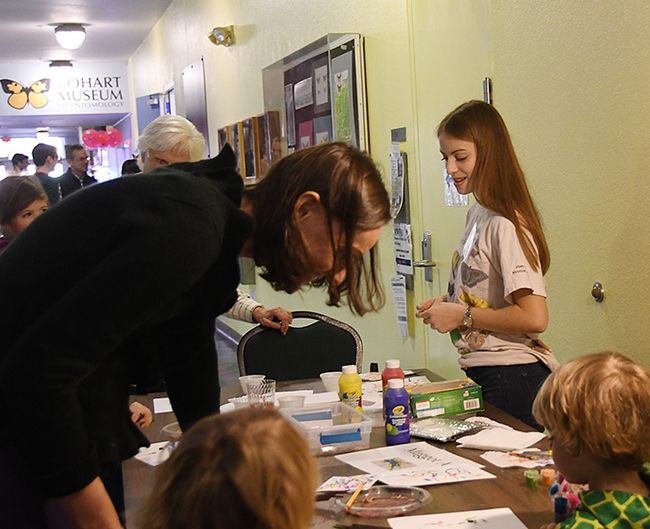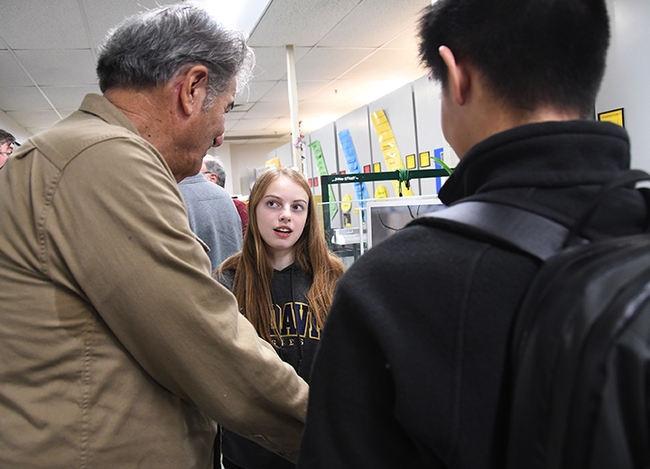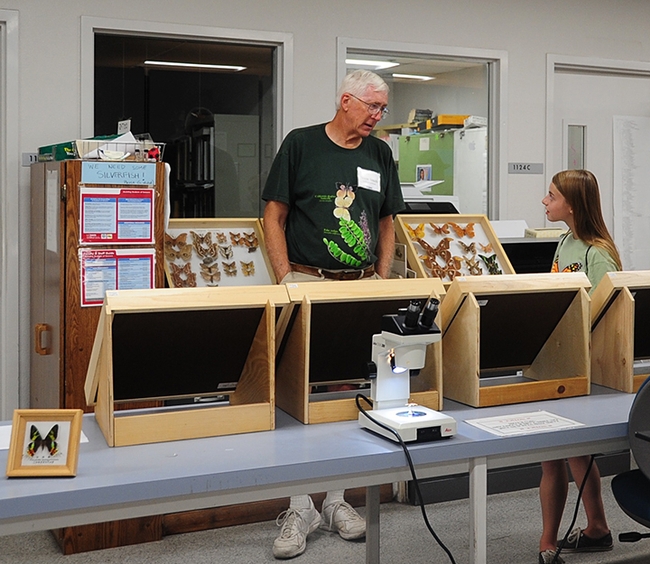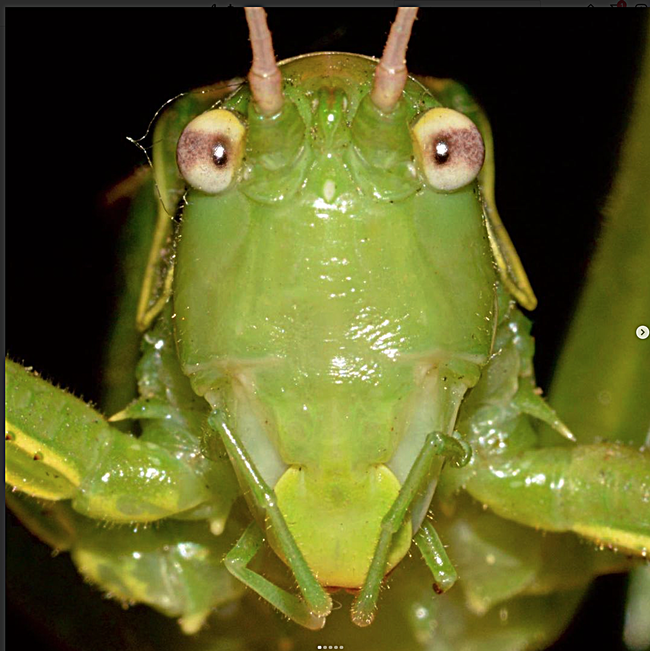- Author: Kathy Keatley Garvey
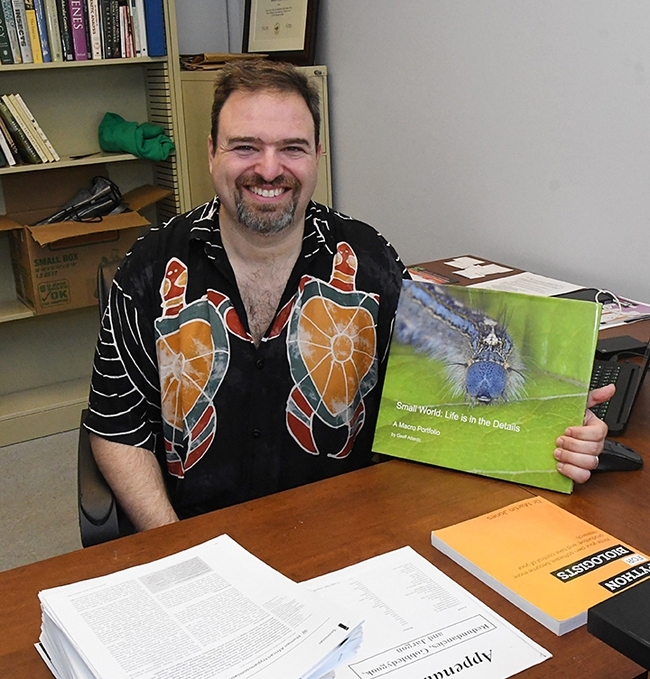
- Medical entomologist-geneticist Geoffrey Attardo, assistant professor, will receive the Medical, Urban, and Veterinary Entomology Award
- Doctoral student Erin Taylor Kelly of the Geoffrey Attardo laboratory will receive the Student Leadership Award
- Undergraduate student Gwendolyn "Gwen" Erdosh of the Louie Yang lab will receive the inaugural Dr. Stephen Garczynski Undergraduate Research Scholarship
- The team of doctoral candidate Zachary Griebenow of the Phil Ward lab, captain; doctoral candidate Jill Oberski of the Ward lab; doctoral student Erin “Taylor” Kelly of the Geoffrey Attardo lab; and doctoral student Madison “Madi” Hendrick of the Ian Grettenberger lab will compete in the Entomology Games.
The awards luncheon is at 12:15, April 12.
Geoffrey Attardo is a global expert on vectorborne diseases, and renowned for his groundbreaking work on tsetse flies. Attardo, who joined the UC Davis Department of Entomology andNematology in 2017 from the Yale School of Public Health's Department of Epidemiology of Microbial Diseases, “excels not only as a researcher, but as a teacher, mentor, scientific illustrator, macro photographer,videographer and science communicator,” said UC Davis distinguished professor Bruce Hammock in his letter of nomination. (See news story)
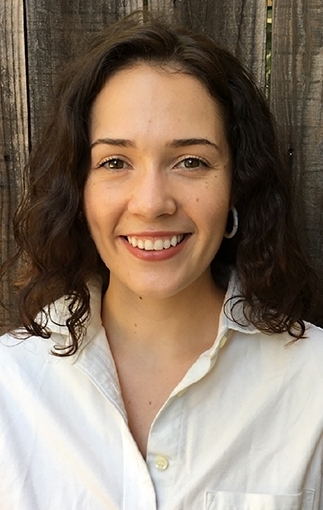
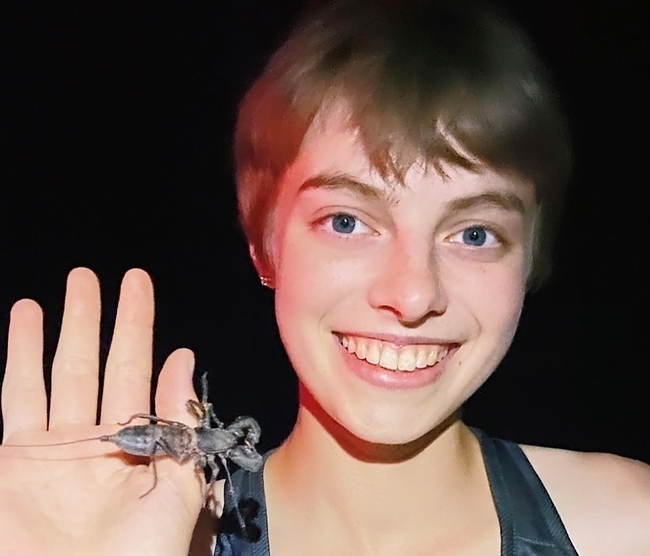
Entomology Games. The Entomology Games is a lively question-and-answer, college bowl-style competition on entomological facts played between university-sponsored student teams. It was formerly known as the Linnaean Games. The preliminary round is from 5 to 6 p.m., April 10. Plans are to hold three rounds with questions from each of the 10 categories: Biological Control, Behavior and Ecology, Economic and Applied Entomology, Medical-Urban-Veterinary Entomology, Morphology and Physiology, Biochemistry and Toxicology, Systematics and Evolution, Integrated Pest Management and Plant-Insect Interactions, History of Entomology, and Entomology in Popular Culture. (See UC Davis news story)
The final round is from 8 to 10 p.m., April 11. Both the championship team and the runner-up team will represent PBESA at the Entomological Society of America (ESA) meeting, Nov. 13-16 in Vancouver, British Columbia. Last year's national champion was the University of Hawaii, which edged Texas A&M University.
UC Davis has scored three national championships since 2015. In 2018, the University of California team won the national championship, defeating Texas A&M. The team included captain Ralph Washington Jr., then a UC Berkeley graduate student with a bachelor's degree in entomology from UC Davis; doctoral students Brendon Boudinot, Jill Oberski and Zachary Griebenow of the Phil Ward lab, and doctoral student Emily Bick of the Christian Nansen lab.
UC Davis won the national competition in both 2016 and 2015, defeating the University of Georgia in 2016, and the University of Florida in 2015.
A number of other UC Davis faculty and students will participate in the PBESA meeting. (See schedule.)
PBESA encompasses 11 Western states, parts of Canada and Mexico and several U.S. territories.
- In the United States: Alaska, Arizona, California, Hawai'i, Idaho, Montana, Nevada, Oregon, Utah, Washington, Wyoming
- U.S. Territories: American Samoa, the Federated States of Micronesia, Guam, Johnston Atoll, Commonwealth of the Northern Mariana Islands, Midway Islands, Wake Island
- In Canada: Alberta, British Columbia, Northwest Territories, Saskatchewan, Yukon
- In Mexico: Baja California, Baja California Sur, Sinaloa, Sonora
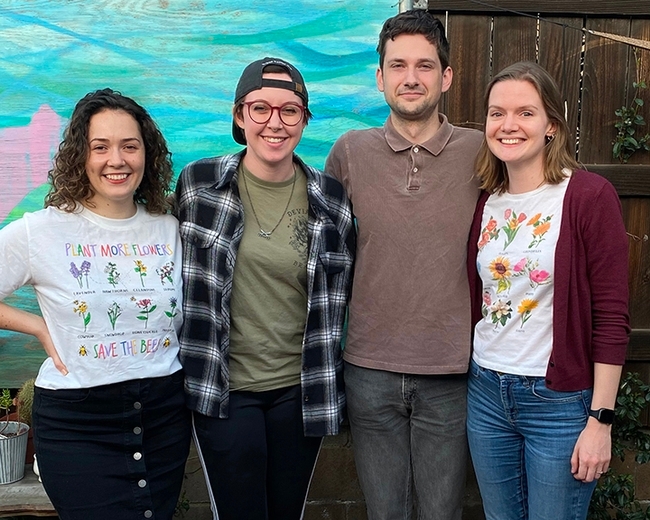
- Author: Kathy Keatley Garvey
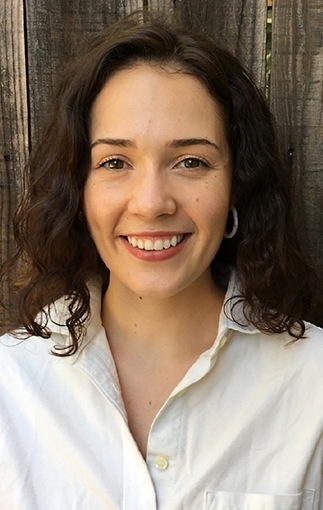
UC Davis received three awards:
- Medical entomologist-geneticist Geoffrey Attardo received the Medical, Urban, and Veterinary Entomology Award. (See news story)
- Doctoral student Erin Taylor Kelly of the Attardo lab won the Student Leadership Award (See news story)
- Undergraduate entomology student Gwen Erdosh of the Louie Yang lab and a member of the Research Scholars Program in Insect Biology, won the inaugural Dr. Stephen Garczynski Undergraduate Research Scholarship (See news story)
The branch encompasses 11 Western states, parts of Canada and Mexico and several U.S. territories.
In the United States: Alaska, Arizona, California, Hawai'i, Idaho, Montana, Nevada, Oregon, Utah, Washington, Wyoming
U.S. Territories: American Samoa, the Federated States of Micronesia, Guam, Johnston Atoll, Commonwealth of the Northern Mariana Islands, Midway Islands, Wake Island
In Canada: Alberta, British Columbia, Northwest Territories, Saskatchewan, Yukon
In Mexico: Baja California, Baja California Sur, Sinaloa, Sonora
Congratulations to all the winners!
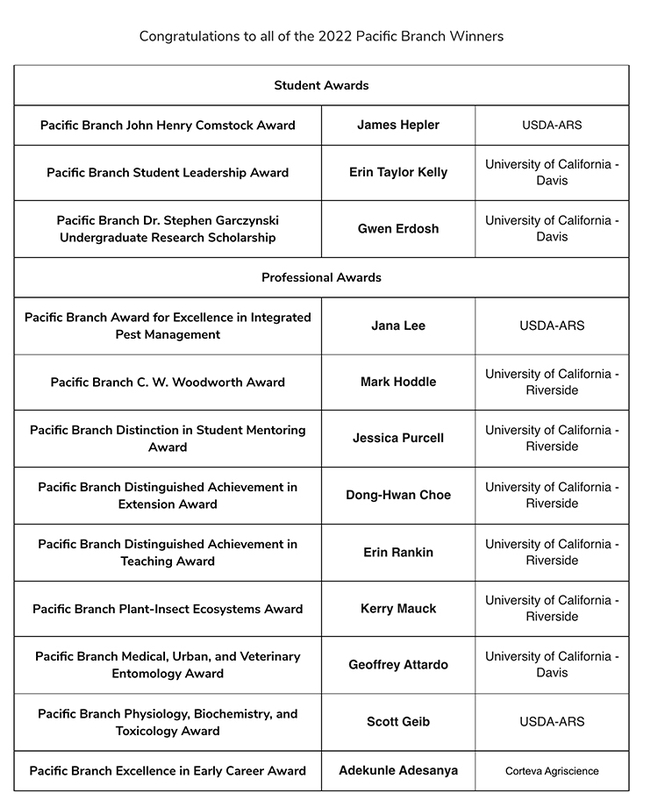
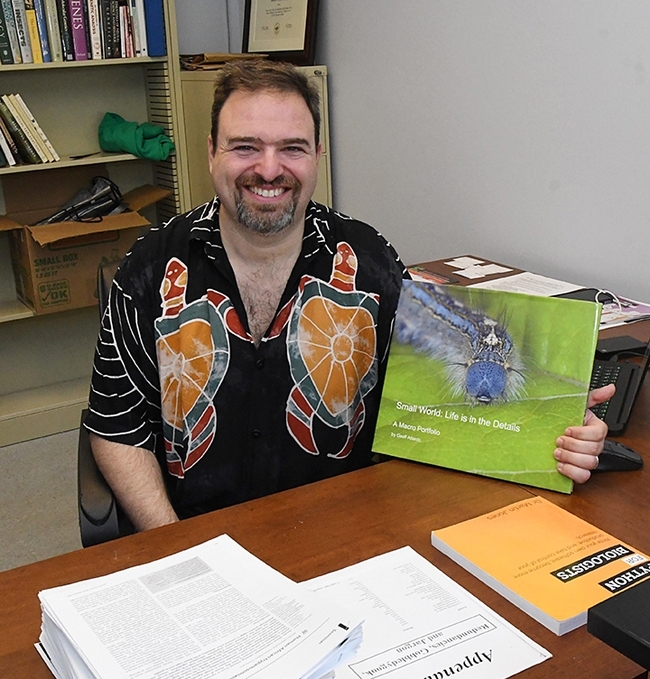
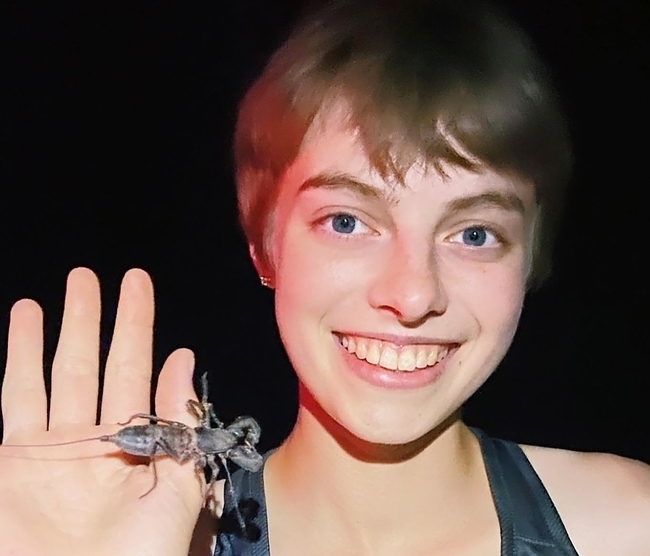
- Author: Kathy Keatley Garvey
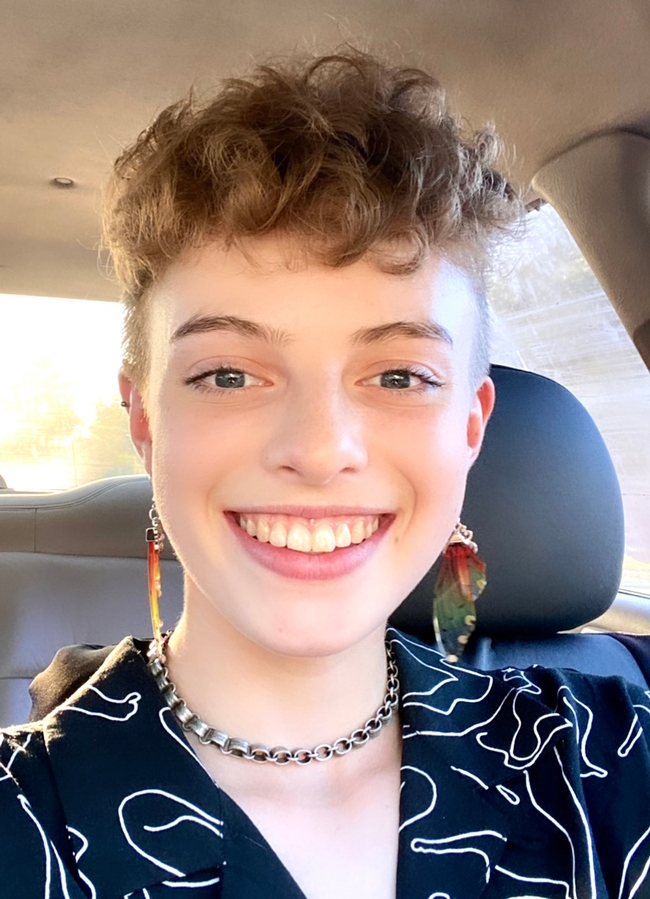
And you'll see arthropods such as jumping spiders (family Salticidae) and scorpions (superfamily Scorpionoidea).
Who is Gwentomologist?
She's 21-year-old Gwendolyn “Gwen” Erdosh, a UC Davis entomology major and undergraduate researcher with 21,900 followers on Instagram, where she shares her fascination, passion and growing scientific knowledge of entomology with the intensity of a moth heading for light.
Erdosh, president of the UC Davis Entomology Club, a scholar in the campuswide Research Scholars Program in Insect Biology (RSPIB), the recipient of a Provost's Undergraduate Fellowship (PUF) research award, and a volunteer at the Bohart Museum of Entomology, brims with enthusiasm.
In a recent post, she related how she “raised this gorgeous female Hemileuca eglanterina (sheep moth) from a tiny caterpillar!! First time successfully rearing these species. I got a male and female, and I was hoping they'd mate but it never happened. Guess they didn't like each other. I have some eggs overwintering, and I hope they make it ‘til the spring!”
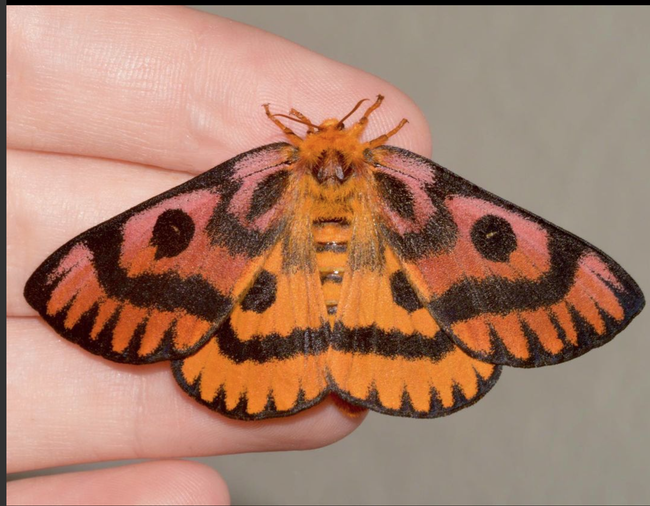
“The best way to see the adult is to rear caterpillars,” Gwen noted. “In the past, I attempted to rear the caterpillars and ran out of host plant. With no method of transportation to the high sierras, I had to give them rose leaves, which worked…until it didn't. They all got a disease and died. This time, I had tons of host plant, and was able to return to the mountains in my car to get more (they eat way more than you'd expect). I'm really happy that I was able to raise this species successfully, and hope to do it again next spring! The insect season is coming to a close, but certain species only come out around this time, so I'll be on the lookout.”
In another post, Gwen wrote that “Today I took on a difficult task: identifying a Chrysidid wasp to species! These colorful wasps are commonly known as cuckoo wasps. This is a specimen I collected on July 13 of this year, a few miles south of Lake Tahoe, at Carson Pass.
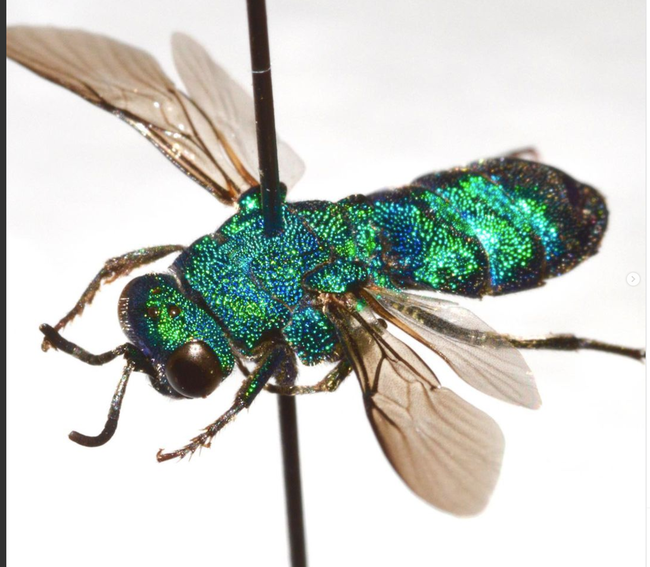
Gwen went on to describe the wasp as a nest parasite of sand wasps, and detail its characteristics. “The mesopleuron has a projecting lobe, the tegula (on top of thorax at base of wing) is subovoid, meaning it's fairly egg-shaped. The metanotal projection is large and #mucronate, meaning it ends abruptly in a sharp point, not an elongated point; the propodeal angle is shaped like an acute triangle. I was able to find the species by looking at the key combined with location records. Based on both sources of information, I concluded that my specimen was Parnopes edwardsii.”
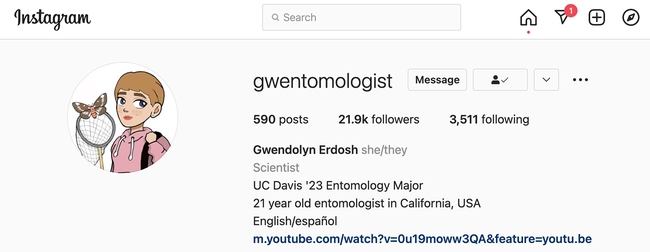
“On my page, I mainly post my own macro-photographs with detailed captions about the featured insect,” Gwen explained. “My goal is to not only teach others, but also learn a lot myself. I also post fun and engaging videos to encourage others to pursue entomology. Many times, people have told me that my page helped them decide that they wanted to pursue entomology as a career! I love being able to spread the love of insects to others, and will continue to be active on my page.” Additionally, she maintains a YouTube account as “gwentomologist.”
A 2018 graduate of Los Gatos High School, Santa Clara County, and a UC Davis student since 2019, she anticipates receiving her bachelor's degree in 2023. In February 2020, she applied for—and was accepted—into the highly competitive RSPIB program, which aims to provide undergraduates with closely mentored research experiences in biology. She studies with community ecologist and professor Louie Yang, UC Davis Department of Entomology and Nematology, one of the three RSPIB founders.
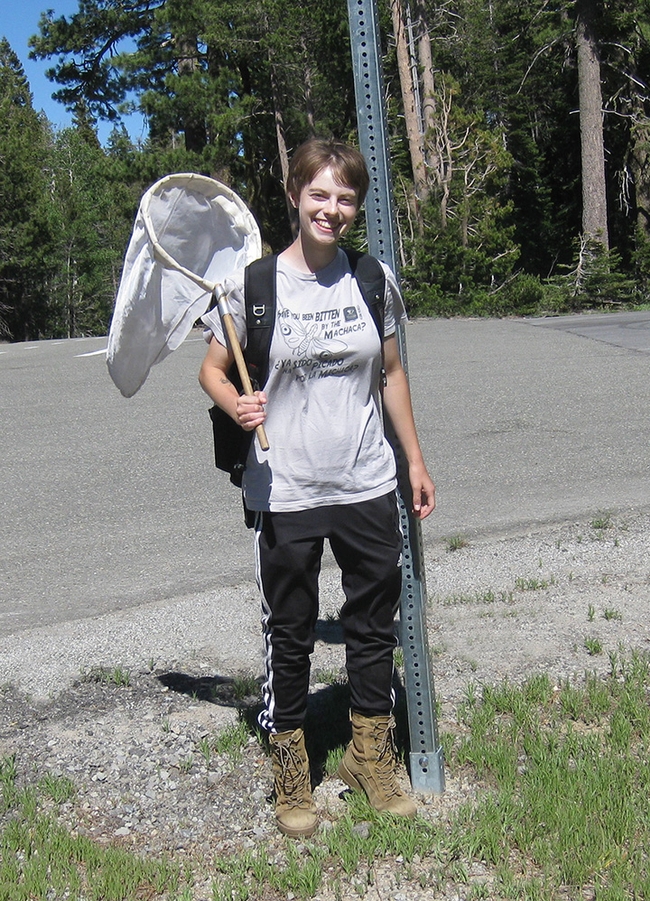
Gwen's interest in entomology began with caterpillars.
“Ever since I can remember, I have always loved caterpillars,” Gwen said. “As a little kid, I would collect any caterpillar I saw and raise it to adulthood.” Amazed that a caterpillar could "magically change” into a moth or butterfly, she decided “to make a book matching every caterpillar to its adult. I did my own research online and in books I had, and soon was quite knowledgeable about Lepidoptera. The summer before 9th grade, I attended Bio Boot camp, the summer camp for kids led by the Bohart Museum, and Tabatha Yang (education and outreach coordinator). “This was the experience that led me to choose entomology as a career. During this camp, I learned everything about entomology and had a chance to meet real entomologists at UC Davis, and do field work. I fell in love with it and kept coming back each summer for the camp.”
Gwen started her own insect collection, inspired by Jeff Smith (curator of the Bohart Museum's Lepidoptera collection). “Since then, I have never doubted my decision to be an entomologist, not even once. My passion only grew once I entered college, and I consider entomology a lifelong journey of discovering everything about these beautiful, intricate, and fascinating creatures.”
“Gwen is one of those students who instantly shows you her enthusiasm and enjoyment of entomology," Smith said, "and it is just this kind of person who we hope will continue in this important field of science. For those of us looking ahead at the oncoming 'golden years' we need to ensure that there will be competent young scientists who will continue the research and who will discover so many more fascinating things about the world of ‘bugs.' Gwen clearly will be one of these, and I am proud to be associated with her.”
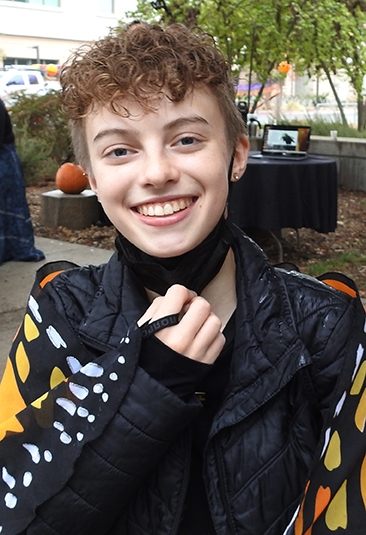
Following her UC Davis graduation, she plans “to work abroad for a year in South America doing research. I then want to apply for graduate school in the United States. I may decide to get my masters first in systematics, and then decide if I want to get my PhD in insect ecology or insect systematics. I cannot decide between the two. However, I definitely want to pursue a career as a professor and researcher.”
Some of her role models include Louie Yang, Lynn Kimsey (director of the Bohart Museum and a UC Davis distinguished professor), Greg Kareofelas (Bohart associate), Jason Bond (UC Davis spider specialist, professor and associate dean), and Jason Dombroskie (manager of the Cornell University Insect Collection and coordinator of the Insect Diagnostic Lab.)
“It is always great to see someone be able to pursue their passion and be successful,” Kareofelas said, adding that Gwen sometimes accompanies him on his many field trips and “she is always welcome. Her enthusiasm, knowledge and energy make these trips a memorable and learning event for both of us! Her photographic skills enable her to record the insects ‘in nature' and as a curated specimen. Her curated specimens are an example of how a collection should be made and how it should look.”
As a 15-year-old high school student, Gwen traveled to the Bohart Museum in 2016 for its annual Moth Night and conferred with many of the scientists.
At age 16, she served an entomology internship at Cornell University, where her work included identifying microlepidoptra in the family Tortricidae; sampling monarch butterflies for Ophryocystis elektroscirrha (OE) spores; catching and tagging the gray petaltail dragonfly (Petalurid) at a local state park; and collecting, identifying and presenting moths for a Moth Night program at the Roger Tory Peterson Institute of Natural History.
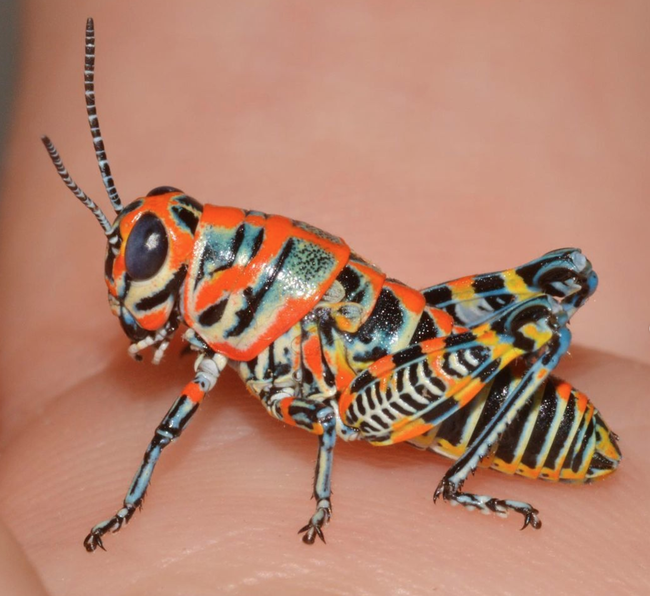
That was not her first internship. Gwen gained experience at a five-week internship in the summer of 2018 at the Monteverde Butterfly Gardens in Costa Rica, where she studied insects, conducted tours, and cared for the arthropods in the insectarium.
At age 12, while attending Bio Boot Camp, Gwen learned about the UC Davis Entomology Club, advised by forensic entomologist Robert Kimsey of the UC Davis Department of Entomology and Nematology. “It had always been my dream to be president one day. From the moment I entered UC Davis, I immersed myself in the club, and became extremely active in it.” She attends all the meetings and field trips; the members now include some of her closest friends. Before advancing to president this year, she served as vice president in 2020 and social media coordinator in 2019.
“I'm super passionate about the club,” Gwen acknowledged. “In fact, it's my favorite time of the week during the quarter. The people in the club are absolutely incredible, and we all inspire each other in so many different ways. I feel so grateful that this organization exists at UC Davis, and I'm glad I have a team of officers that really put in the work to make it an inclusive, fun, and educational environment for anyone who wants to join.”
In addition, Gwen is vice president of the UC Davis STEM Careers Club, booking speakers, and inspiring students to enter the fields of science, technology, engineering and mathematics. She has also worked as a youth steward for Grassroots Ecology of Central California (removing invasive plants, planting native grasses and trees, and surveying mammals and birds using a motion-activated camera); and as a volunteer counselor at the Walden West Summer Camp, a nature summer camp for elementary-school age youths.
Although sometimes mistaken for a teenager--“I look young for my age and I'm 5' 1”--Gwen doesn't let that stop her. “I now have accepted who I am and I do not let what others think of me affect me or my goals. I am glad that I am unique!”
Tabatha Yang of the Bohart Museum, coordinator of the Bio Boot camps, remembers Gwen as passionate about entomology when she first enrolled as a middle-school student. "She was an enthusiastic camper with applications that were passionate about insects and insect rearing. We were thrilled when she chose to come to UC Davis for entomology. It doesn't surprise me that she is now president of the entomology club."
Gwen's hobbies and interests closely align with her career plans. They include collecting, photographing, and pinning insects; exploring and observing wildlife; traveling; creating art; producing music on FL Studio (digital audio workstation); and spending time with her friends—two-legged friends (people), six-legged friends (insects) and eight-legged friends (arachnids).
Gwendolyn Erdosh, Gwentomologist.
